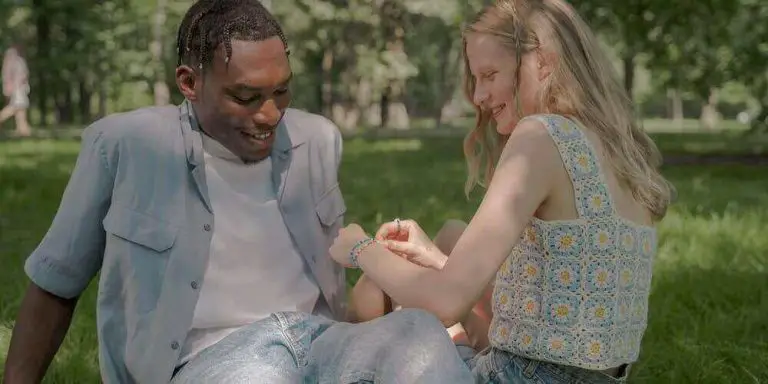In this article, we’ll explore the intricate dynamics of understanding passivity in relationships to enhance communication, connection, and emotional intimacy.

Introduction
Passive behavior in relationships can often hinder effective communication and emotional intimacy.
When it comes to understanding passivity in relationships, it’s crucial to delve into the underlying dynamics that contribute to this behavior.
By comprehending the reasons behind passivity, we can work towards building stronger connections and more open lines of communication.
In this article, we’ll take an in-depth look at the concept of understanding passivity in relationships, exploring its implications, causes, and strategies for fostering healthier connections.
In today’s fast-paced world, maintaining healthy relationships requires more than just shared interests; it demands effective communication and emotional engagement.
However, understanding passivity in relationships is a critical aspect of this journey.
Passivity involves not expressing one’s thoughts, feelings, or needs openly and directly, often leading to misunderstandings and unmet expectations.
To navigate this challenge, let’s explore the concept of understanding passivity in relationships and its significance.
Understanding Passivity in Relationships

Passivity, in the context of relationships, refers to the tendency of an individual to avoid confrontation or assertiveness.
It involves suppressing one’s true feelings, thoughts, or desires due to fear of conflict, rejection, or discomfort.
This behavior might stem from a variety of factors, including past experiences, self-esteem issues, or a desire to maintain harmony.
The Impact of Passivity
Passivity can significantly impact the dynamics of a relationship.
When individuals fail to express their needs and emotions openly, it can lead to misunderstandings, resentment, and emotional distance.
Moreover, the lack of clear communication can prevent partners from addressing important issues, thereby hindering the growth of the relationship.
Causes of Passivity
Understanding the root causes of passivity is crucial for addressing this behavior effectively.
Some common causes include:
- Fear of Conflict: Many individuals avoid expressing themselves out of a fear of conflict. They may worry that speaking up will lead to arguments or even the end of the relationship.
- Low Self-Esteem: People with low self-esteem might believe that their thoughts and feelings are not worthy of attention, leading them to stay passive in their interactions.
- Past Trauma: Individuals who have experienced past traumas, such as emotional or physical abuse, might develop passivity as a coping mechanism to protect themselves from further harm.
Nurturing Lasting Relationships
While relationships can bring immense joy and companionship, they also require effort, understanding, and effective communication.
One of the crucial aspects that can impact the course of a relationship is understanding passivity.
Delving deeper into this concept unveils layers of dynamics that can make or break the connection between individuals.
The Silent Struggle
Passivity is often seen as the silent struggle within relationships.
It’s not just about staying quiet; it’s about suppressing feelings and thoughts that need to be heard.
Imagine a scenario where one partner yearns for emotional support but refrains from expressing it.
Over time, this can lead to emotional disconnect, leaving both partners feeling unheard and misunderstood.
The Balance Between Harmony and Expression
Harmony in relationships is undoubtedly important, but it shouldn’t come at the cost of suppressing your true self.
Understanding passivity means finding the delicate balance between maintaining peace and expressing your authentic thoughts.
True emotional intimacy can only be achieved when both partners feel free to share their feelings, even if they lead to uncomfortable conversations.
The Subtle Forms of Passivity
Passive behavior isn’t always overt. It can manifest in subtle ways, such as avoiding conflict, giving in to decisions without voicing concerns, or even deflecting conversations that touch on sensitive topics.
These seemingly harmless actions can accumulate over time, creating barriers to open communication and genuine understanding.
Strategies to Overcome Passivity
Overcoming passivity is a journey that requires commitment and self-awareness.
It’s about taking steps to rebuild bridges of communication and fostering a deeper connection.
Here are additional strategies to help you along this journey:
1. Cultivate Self-Awareness
Begin by recognizing your own passivity tendencies. Reflect on moments when you held back from expressing yourself.
Understanding the patterns of your behavior can empower you to make conscious changes.
2. Practice Assertiveness
Assertiveness is the antidote to passivity. Practice expressing your thoughts, feelings, and needs in a clear and respectful manner.
Remember, your emotions are valid, and your partner deserves to hear them.
3. Open Dialogue
Initiate open and honest conversations with your partner.
Create a safe space where both of you can share your thoughts without fear of judgment.
Active listening and empathy play a crucial role in these discussions.
4. Set Boundaries
Establishing healthy boundaries is essential for maintaining mutual respect.
Clearly define your limits and communicate them to your partner.
This promotes a balanced and harmonious relationship.
5. Seek Professional Help
If passivity is deeply ingrained and impacting your relationship, consider seeking the assistance of a therapist or counselor.
Professional guidance can provide valuable insights and strategies for positive change.
6. Cultivate Empathy
Empathy is a cornerstone of healthy relationships. Put yourself in your partner’s shoes to truly understand their emotions and perspectives.
This can create a more supportive and empathetic environment for open conversations.
7. Practice Active Listening
Effective communication isn’t just about speaking; it’s also about listening actively.
Give your partner your full attention, validate their feelings, and respond thoughtfully. This encourages reciprocal openness.
8. Celebrate Vulnerability
Vulnerability is a sign of strength, not weakness.
Encourage each other to be vulnerable by creating a safe space where feelings can be shared without judgment.
9. Regular Check-ins
Set aside time for regular check-ins where you can openly discuss your feelings, concerns, and joys.
These intentional conversations can prevent misunderstandings from snowballing.
10. Embrace Growth
Relationships evolve, and so do individuals within them.
Embrace personal growth and changes, and communicate your evolving needs to your partner.
11. Lead by Example
Be the change you wish to see in your relationship.
If you want more openness and direct communication, exemplify these qualities in your interactions.
The Path Forward: Nurturing a Deeper Connection
Understanding passivity in relationships is a process that demands patience and effort.
It’s about peeling back the layers of communication patterns, acknowledging insecurities, and choosing vulnerability over silence.
The path forward involves a commitment to growth and building a strong foundation of trust.
Conclusion
Understanding passivity in relationships is a journey that involves self-discovery, open communication, and a commitment to change.
By recognizing the impact of passivity, addressing its root causes, and implementing strategies for positive transformation, individuals can create deeper and more fulfilling connections with their partners.
Remember, building a strong relationship requires effort from both sides, and embracing open communication is the first step towards fostering a lasting bond.
Frequently Asked Questions
Q: Is passivity the same as being a good listener?
A: No, passivity involves not expressing your thoughts or needs, while being a good listener means actively engaging in conversations and understanding your partner’s perspective.
Q: Can a passive person change their behavior?
A: Yes, with self-awareness and effort, a passive person can learn to be more assertive and communicate effectively.
Q: How does passivity affect emotional intimacy?
A: Passivity can create emotional distance as partners may struggle to understand each other’s feelings and needs, leading to unfulfilled emotional intimacy.
Q: What role does fear play in passivity?
A: Fear of conflict, rejection, or vulnerability often drives passivity. It’s important to address and manage these fears for healthier relationships.
Q: Can passivity be a form of manipulation?
A: Yes, in some cases, passive behavior can be a subtle form of manipulation, as individuals may use it to elicit a specific reaction from their partner.
Q: How can open communication reduce passivity?
A: Open communication encourages partners to express themselves freely, reducing misunderstandings and creating a stronger emotional connection.
Q: Is passivity always detrimental to a relationship?
A: While occasional passivity might not be harmful, chronic passivity can lead to misunderstandings and emotional distance.
Q: Can both partners contribute to passivity?
A: Yes, both partners can exhibit passive behavior, creating a cycle of miscommunication. Recognizing and addressing this pattern is vital.
Q: Are there cultural differences in how passivity is perceived?
A: Yes, cultural norms can influence how passivity is perceived and practiced. It’s essential to understand and respect these differences.
Q: Can passivity be mistaken for disinterest?
A: Yes, passive behavior might be misconstrued as disinterest, leading to feelings of neglect. This highlights the importance of clear communication.
Q: Can external factors contribute to passivity?
A: External factors like stress, work pressure, or family issues can contribute to passivity. Recognizing these triggers can aid in addressing them.
Q: Can assertiveness training help overcome passivity?
A: Yes, assertiveness training can empower individuals to express themselves confidently and assertively.



